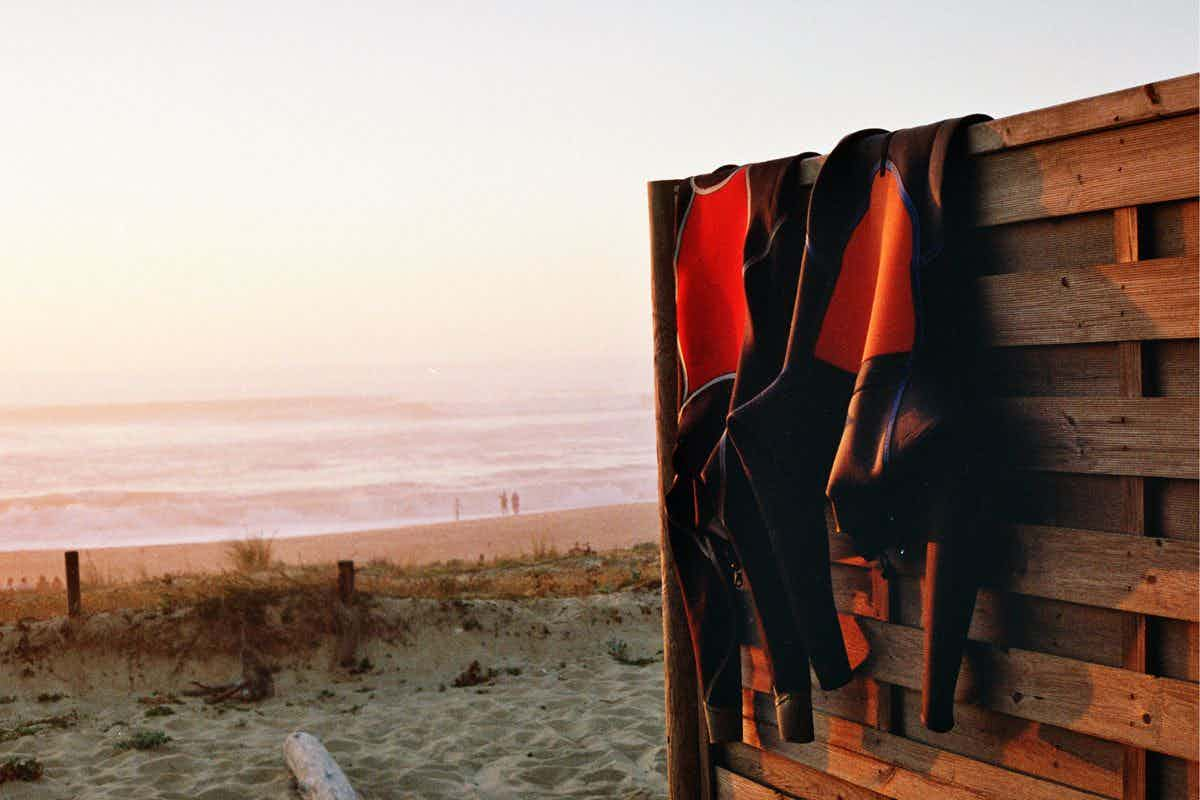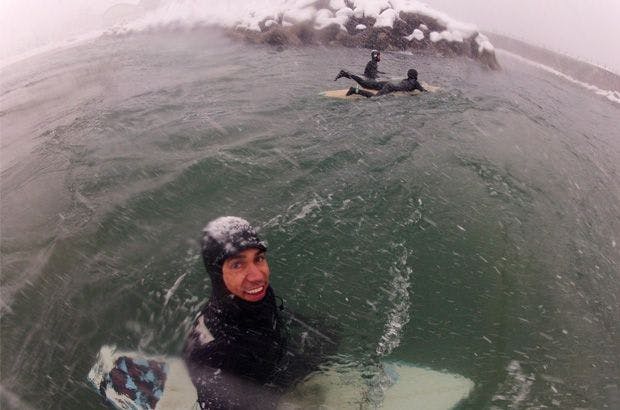ProductsWetsuit Care: Be Nice to Your Neoprene

The fact of the matter is that unless you are fortunate enough to live and surf between the tropics, you will most likely wear a wetsuit to go surfing. And yet, despite it being as essential for so many people’s surfing experience as a surfboard itself, the wetsuit is rarely treated with the same reverence. We mollycoddle a new surfboard like a baby, cradling and cooing over it, and yet we’ll indifferently stamp our new wetsuit into the gravel of the parking lot whilst getting changed after a surf before then leaving it to marinate in a bucket of saltwater, sand and, let’s be honest, possibly urine in the back of the car until the next session. Gross. And not at all good for extending the working life of a bit of kit so necessary to regular surfing. I mean, have you ever read the care instructions when you’ve purchased a new wetsuit? I’ll bet not, even though it cost a lot of money and you want to make it last for as long as possible. You just wanted to pull the tags off, put it on and paddle out, right?

Image: Drying Out, from the book Salt+Wax by Mark Leary
Modern wetsuits are incredible things; twenty years ago they were still more often than not stiff, ill-fitting and prone to flushing through the seams and zip. If you surfed through the winter in high latitudes and needed a hood, they were separate and looked ridiculous, whilst boots and gloves were cumbersome additions that filled with water and were permanently attempting to escape from the ends of your feet and hands.

These days it’s a different story, however, and wetsuit technology has resulted in warmer, thinner and more flexible wetsuits. They really are a second skin, facilitating high performance surfing in waves where the cold would otherwise be an extremely limiting factor.

Image: Surfing in the Snow, by Brendon Smith
You’ll find a lot of opinions on how to care for your wetsuit if you type that phrase into a search engine; lots of dos and don’ts, a few over-involved rituals and some “I always put mine in the tumble dryer” comments (note: don’t do that). My first few jobs on the beach as a grommet were working on a surf hire trailer (renting wetsuits out to tourists by the hour) and then I graduated to teaching surfing at the surf school. In both jobs I spent an awful lot of time stood over a big tub or barrel dunking and rinsing wetsuits then hanging them up to dry, and I therefore feel adequately qualified to share a few easy and realistic tips on how to keep your wetsuit going for another season, whilst you save up for your next piece of space-age neoprene:
- Get yourself a rubber gardening tub or large plastic box to put your wetsuit kit in, to take it to and from the beach. You can stand in this to get changed thus keeping your suit from being trodden into the asphalt, gravel or sand and keeping the worst of the dirt off it. When you get home, you can then stick the hose in the tub and use it as a rinse tank. If you live in a drought region and take cool showers then try putting the tub in your shower and shower with your legs either side of it, so that it collects some of the water. Don’t cook the neoprene with hot water though.
- Rinse your wetsuit with cool fresh water whenever you can. Saltwater isn’t very good for your neoprene or, more importantly, the zip, glues or stitching that hold it all together and so a quick swill around your tub or a spray with the hose will get the worst of it off. Hot water will reduce the flexibility of the neoprene over time however, so avoid that.
- Whilst it’s still inside out, drape it in half at the waist and hang it to drip-dry. This could be as simple as throwing it over a railing or you can feed the legs through a thick plastic clothes hanger and hook it up somewhere, so that both the arms and legs are hanging down. Don’t use a hanger the conventional way because a) the weight of your wet wetsuit will stretch the shoulders and b) it can look creepy having a human shaped form hanging up in your bathroom or garden at night.
- All the care labels will tell you not to hang it in direct sunlight because ultra-violet light will age the neoprene (just like your skin), but most people will hang it in the sun so it will dry quicker. If you have a windy spot in the shade at your disposal then hang it there, but if you hang your wetsuit up in the sun like the rest of us then bring it in as soon as it’s dry and don’t leave it there getting grilled.
- Try not to leave your wetsuit in the boot of your car for weeks on end in summer – hot cars aren’t good for wetsuits in much the same way as they aren’t good for pets.
- Plenty of forums will advise using a special neoprene detergent, but the reality is that not many of us have a bottle of that stored under the kitchen sink. If your wetsuit is starting to smell then you can add a capful of readily available baby shampoo the next time you dunk it in a tub of water, then give it a thorough rinse in clean water. Inadvertently leaving any detergent or shampoo on your wetsuit will have the exact same effect as the time that some joker squirted washing-up liquid into your friends wetsuit and they couldn’t lie on their board properly because they were sliding around inside their suit with bubbles coming out of top of their neck.
- Fact: wetsuit boots will stink, and there is very little that you can do about it.
- You’ll be told not to pee in your wetsuit. That topic deserves a whole other blog post if the editor doesn’t think it too crude or disgusting, but suffice to say that many surfers do and those surfers should probably ensure that they follow the above actions regularly rather than leaving their wetsuit in the boot of their car for weeks on end, if only for the sake of any passengers they may have in the future.
- If you’re storing your summer wetsuit away for the winter (or vice versa), then once it is rinsed and thoroughly dry, don’t fold it up and stuff it in a drawer. If possible, hang it in half as advised on a wide hanger or railing inside. If you must store it flat then lay it down on its front, cross the arms diagonally across the back and then place a cardboard tube (the sort that wrapping paper comes rolled around) across the bum and fold the ankles of the wetsuit up to the neck before storing flat.
Look after your wetsuit, and your wetsuit will look after you. It’s that simple.